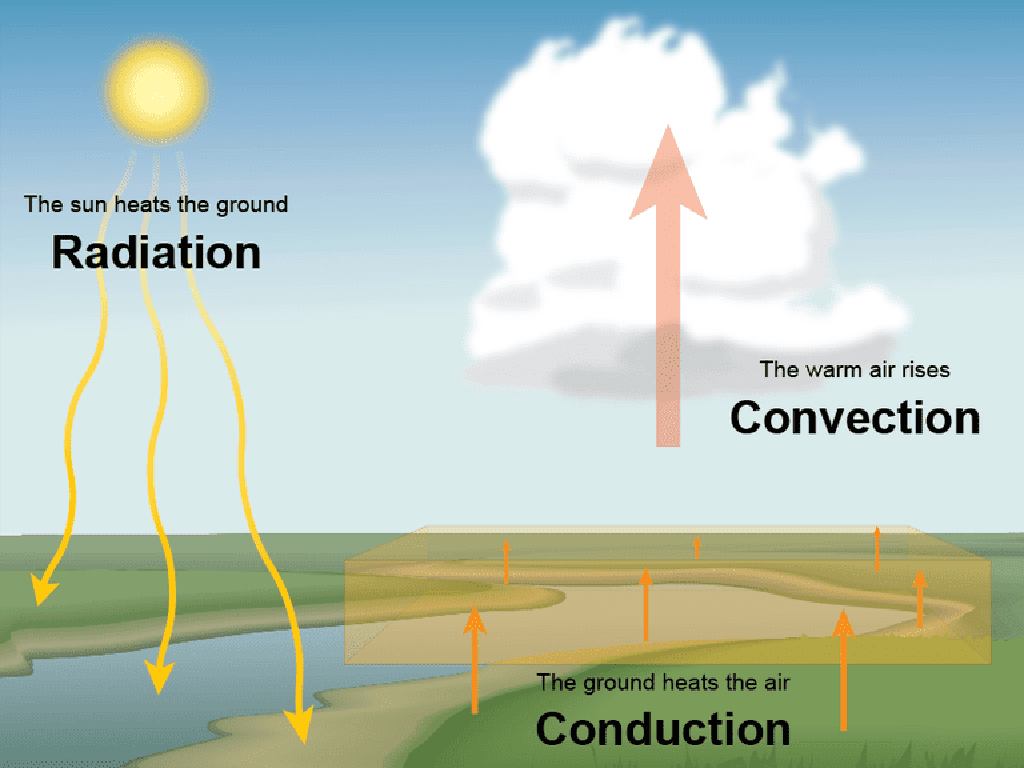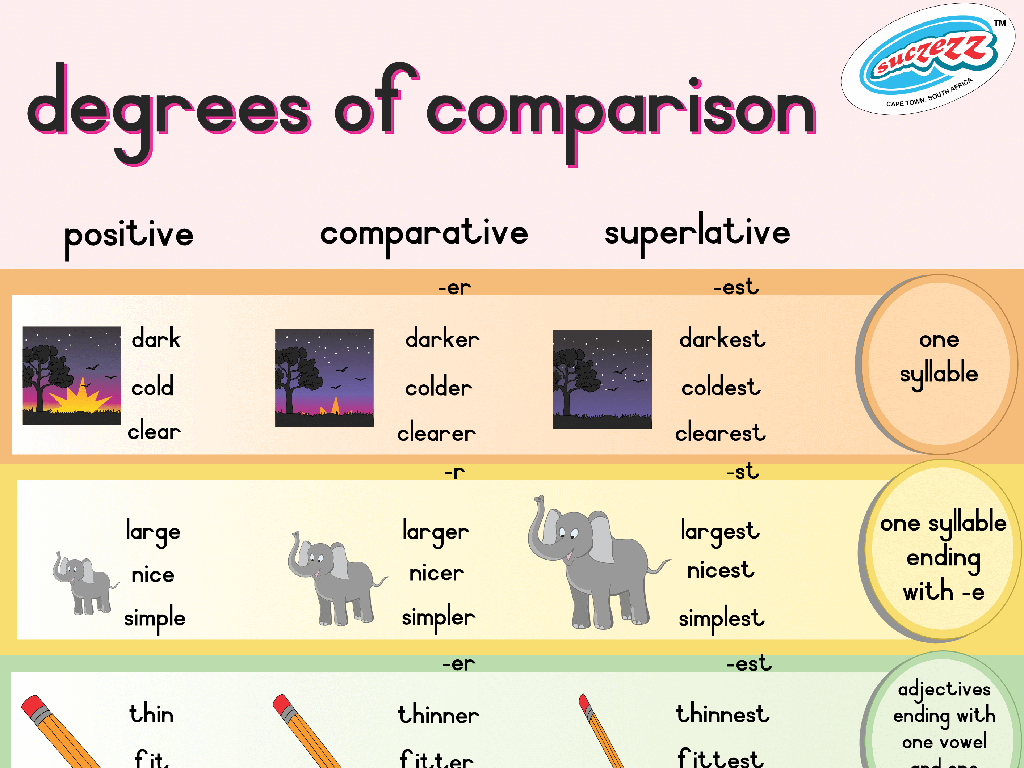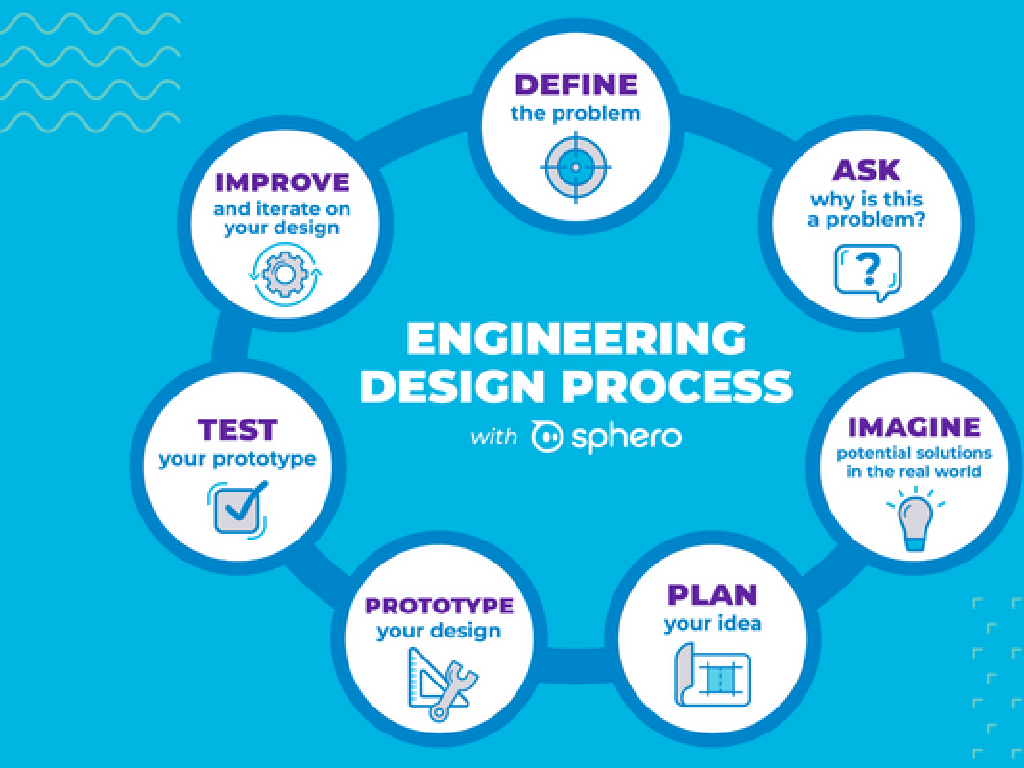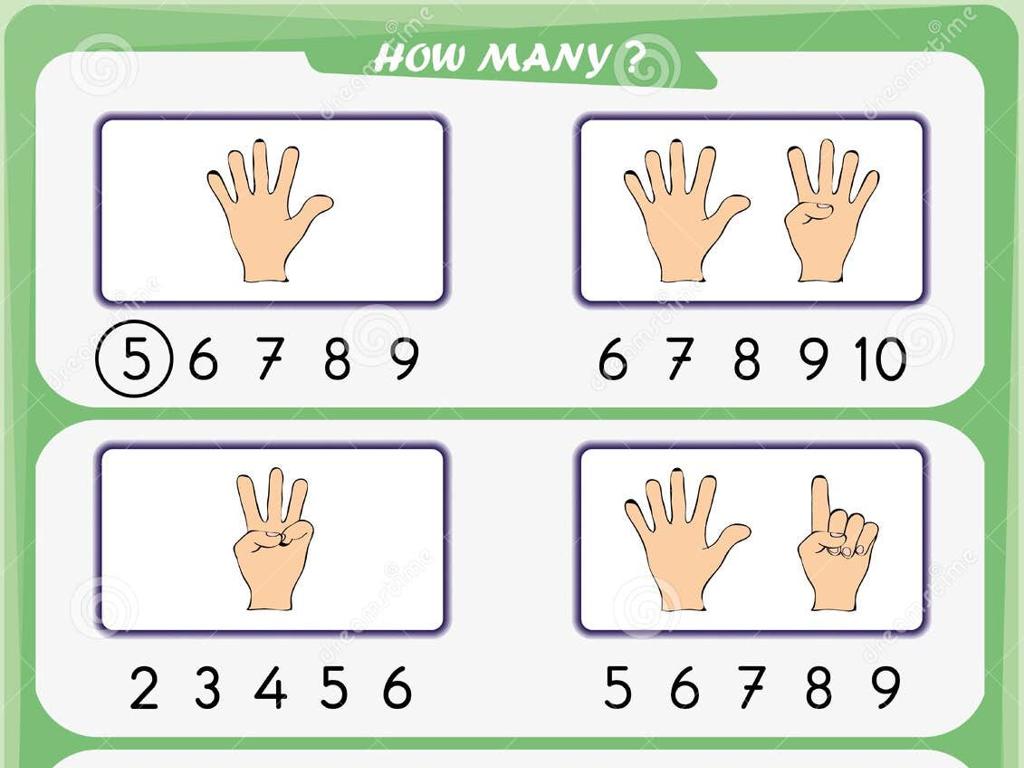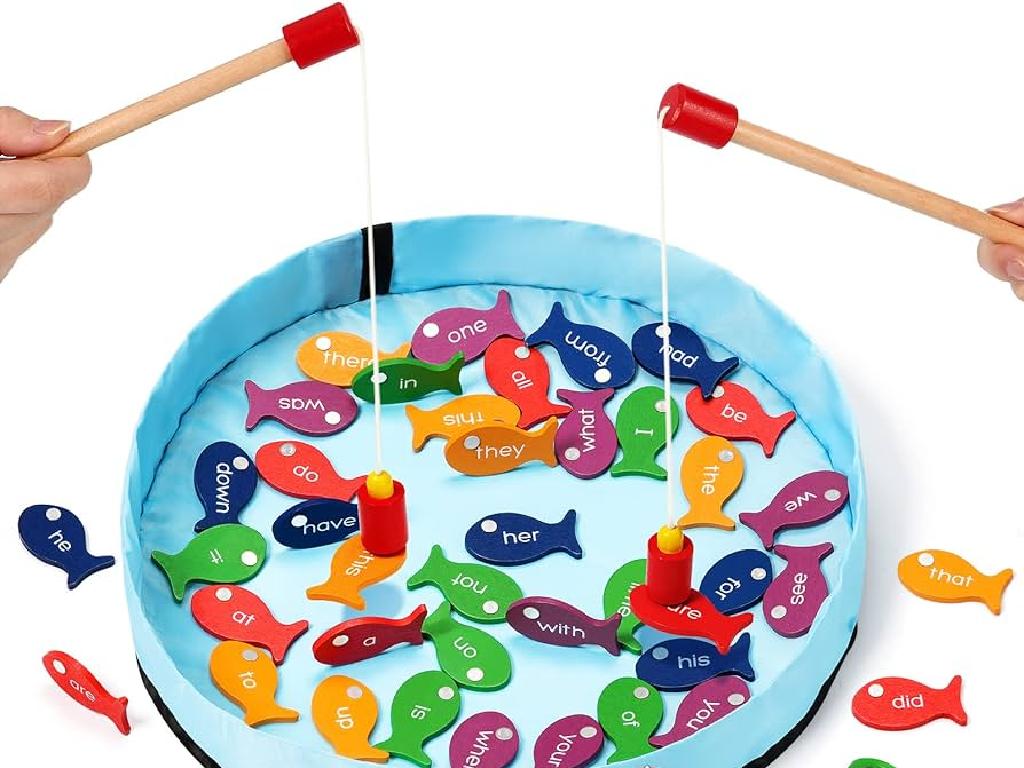Write Multiplication Sentences For Arrays
Subject: Math
Grade: Third grade
Topic: Understand Multiplication
Please LOG IN to download the presentation. Access is available to registered users only.
View More Content
Welcome to Multiplication: Arrays
– Multiplication as repeated addition
– If you have 3 groups of 2 apples, that’s 3 times 2 apples.
– Arrays show multiplication visually
– Arrays are made up of rows and columns filled with objects.
– Rows and columns in arrays
– Count the rows and columns to see the numbers in the multiplication.
– Writing multiplication sentences
– Turn the rows and columns into a multiplication sentence, like 3 rows of 2 is 3 x 2.
|
This slide introduces students to the concept of multiplication as repeated addition, using arrays as a visual tool. Explain that an array is a way to organize objects into rows and columns, making it easier to count and multiply. Show how each row represents a group in repeated addition, and the total number of objects is the product of the two numbers. Encourage students to practice by creating their own arrays with different numbers of rows and columns, and then writing the corresponding multiplication sentence. This will help solidify their understanding of how multiplication represents repeated addition.
Understanding Arrays in Multiplication
– An array organizes objects
– Think of it like a neat grid with items
– Rows have equal numbers
– If there are 3 rows of 4, all rows have 4 items
– Arrays simplify multiplication
– Instead of adding repeatedly, we multiply
– Practice with real examples
– Use items like fruits or toys to create arrays
|
Introduce the concept of an array to the students as a visual method to organize objects into rows and columns, which makes counting easier. Emphasize that each row in an array must have the same number of objects to help us use multiplication instead of addition. For example, if there are 5 rows of 2 apples, instead of saying ‘2+2+2+2+2’, we can say ‘5 times 2’. Encourage students to practice by creating their own arrays with classroom objects and writing the corresponding multiplication sentence. This will help them visualize the concept and understand the purpose of arrays in multiplication.
Creating Arrays: Visual Multiplication
– Build your own item arrays
– Use objects like coins or blocks to form arrays
– Count items in rows and columns
– If you have 3 rows of 4 coins, how many coins are there in total?
– Understand how arrays simplify counting
– Arrays organize items into rows and columns for quick counting
– Arrays represent multiplication sentences
– Each array shows a multiplication fact, like 3 rows of 4 coins is 3 x 4
|
This slide is designed to help students visualize multiplication through the use of arrays. By creating their own arrays with tangible items such as coins or blocks, students can concretely see the concept of multiplication. Encourage them to count the total number of items by rows and columns, and to recognize that this process is a quicker way to count than doing so one by one. Highlight that each array corresponds to a multiplication sentence, which represents the total count. For example, an array with 3 rows of 4 coins each can be expressed as the multiplication sentence 3 x 4 = 12. This activity will solidify their understanding of multiplication as repeated addition and prepare them for more abstract multiplication problems.
Writing Multiplication Sentences for Arrays
– Multiplication sentence structure
– A multiplication sentence has two numbers and a product, like 2 x 3 = 6
– Multiply rows and items per row
– Count rows and then count how many in one row, like chairs in a classroom
– Product equals total items
– Add up all the items to find the product, like total chairs in all rows
– Example: 3 rows of 4 items
– For instance, 3 rows with 4 apples each is 3 x 4 = 12 apples
|
This slide introduces students to the concept of writing multiplication sentences using arrays. Begin by explaining that a multiplication sentence is a way to describe adding equal groups of items together. Show them how to identify the number of rows and the number of items in each row to form the multiplication sentence. Emphasize that the product is the result of multiplying these two numbers together, which gives the total count of items. Use visual aids like pictures of arrays to illustrate this concept. For example, draw an array with 3 rows of 4 apples and demonstrate how to write the corresponding multiplication sentence: 3 x 4 = 12. Encourage students to create their own arrays with different items and write the multiplication sentences for them.
Example Time: Writing Multiplication Sentences
– Visualize an array with 3 rows
– An array is a set of objects arranged in rows and columns
– Count 4 items in each row
– Each row has the same number of items
– Write the multiplication sentence
– 3 rows times 4 items equals 12
– Understand the product of 3 x 4
– Multiplying 3 by 4 gives us the total number of items, which is 12
|
This slide is designed to help students visualize multiplication as an array of items. By seeing 3 rows with 4 items in each, they can easily understand that multiplication is just adding the same number multiple times. The sentence ‘3 rows times 4 items in each row equals 12 items total’ helps solidify this concept. The equation 3 x 4 = 12 shows the relationship between the rows, columns, and the total count. Encourage students to draw their own arrays and write corresponding multiplication sentences to reinforce the concept.
Practice with Arrays: Building and Writing
– Create your own arrays
– Use classroom objects for arrays
– For example, use pencils or blocks to make arrays
– Write a multiplication sentence
– If you have 3 rows of 4 pencils, write ‘3 x 4’
– Explain your array with the sentence
– Share how your sentence represents your array
|
This slide is meant to engage students in a hands-on activity to reinforce their understanding of arrays and multiplication sentences. Encourage them to use tangible objects like pencils, erasers, or blocks to create arrays. They should arrange these objects in rows and columns and then write a multiplication sentence that describes the number of objects. For instance, if a student makes an array with 5 rows and 2 objects in each row, they would write ‘5 x 2’. After creating their arrays and writing the corresponding multiplication sentences, ask students to explain how their sentence represents their array. This activity will help solidify the concept of multiplication as repeated addition and the use of arrays to visualize this process.
Class Activity: Array Builders!
– Build arrays using counters
– Write multiplication sentences
– Example: 3 rows of 4 counters is 3 x 4
– Discuss findings with your group
– Share with the class
|
This interactive class activity is designed to help students visualize multiplication as an array of objects. Divide the class into small groups and provide each group with counters and grid paper. Students will arrange their counters to form arrays and then write the corresponding multiplication sentence that describes the array (e.g., 3 rows of 4 counters is represented by the multiplication sentence 3 x 4). After constructing and discussing their arrays within their groups, each group will present their arrays and sentences to the class. This will reinforce their understanding of multiplication as repeated addition and how it relates to an array format. Possible variations for different groups could include using different numbers of counters, creating arrays with more rows or columns, or challenging students to find multiple multiplication sentences that can represent the same array.
Review: Arrays & Multiplication Sentences
– Review arrays and multiplication
– Ask for questions or clarifications
– Provide an array example
– E.g., 2 rows of 4 apples: an array
– Explain the multiplication sentence
– The sentence is 2 x 4 = 8 apples
|
This slide is meant to consolidate the students’ understanding of arrays and how they relate to multiplication sentences. Begin by reviewing the concept of arrays as a set of objects arranged in rows and columns, and how this visual representation can help in understanding multiplication. Encourage students to ask questions if they’re unsure about any part of the lesson. Then, ask for volunteers to provide examples of arrays they’ve encountered, and guide them to write the corresponding multiplication sentence. For instance, if a student describes an array with 2 rows of 4 apples, help them articulate that the multiplication sentence is 2 times 4 equals 8. This interactive review will help reinforce their learning and prepare them for more complex multiplication tasks.
Homework Challenge: Array Hunt
– Find array examples at home
– Write their multiplication sentences
– If you see 3 rows of 4 apples, write 3 x 4 = 12
– Be ready to share in class
– Practice makes perfect!
|
This homework task is designed to reinforce the concept of arrays and how they relate to multiplication. Students are asked to look around their homes for items arranged in arrays, such as eggs in a carton or a set of chairs around a table. They should then write the multiplication sentence that represents each array (e.g., 2 rows of 5 chairs is 2 x 5 = 10). Encourage students to be creative and find a variety of arrays. In the next class, students will have the opportunity to share their findings, allowing them to see how multiplication is present in everyday life and to learn from each other’s examples. This activity will help solidify their understanding of arrays and multiplication sentences.

